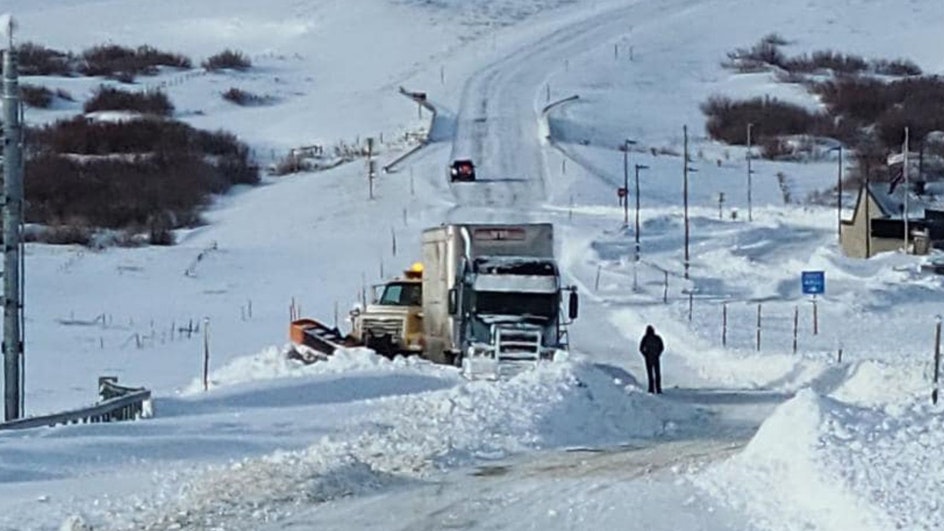The snow that fell in Casper on Monday, April 3 was epic by any measure. 26.7 inches was the "official" tally for that day, reported at the Natrona County Airport - officially blowing away the old record, which had stood for over 40 years.
"The old record was 24.3 inches, and that happened on Christmas Eve in 1982," said Cowboy State Daily meteorologist Don Day. "Then the snow kept falling into April 4, and so the total between the two days ended up being 37.4 inches - and that broke the two-day record of 31.3."
The two-day tally broke records that had stood since 1937, which is when that data started being recorded at the airport in Casper.
"That's actually a pretty decent period of record for this part of the country," said Day.
But Casper wasn't the only location that got hammered by the spring storm that blew through Wyoming on Monday and Tuesday.
"Atlantic City by South Pass reported 48.8 inches of snow," said Day. "Now that was an estimated total, but there's going to be other totals that were higher than that."
Who's Doing the Measuring?
Day explained that those official numbers can vary, according to whoever is doing the measuring. In this case, the data was compiled at the Natrona County Airport - a common location for weather reporting in this part of the country.
"In the history of weather observations, especially in the western United States, the most accurate data is going to be at airports, because it's aviation," said Day. "You need to know what the weather is."
But especially here in Wyoming, where mountains and other terrain features can influence drifting snow, measurements can vary wildly within very short distances.
"There's a person who is an observer, who volunteers, and they live seven miles south of Casper, which is basically the base of Casper Mountain," said Day. "They reported 60 - six-zero - inches of snow."
And those wide-ranging results aren't unusual, he said, because of variables such as temperature, drifting and settling of the snowpack, as well as water content.
"You could give somebody a ruler and send them out and say, 'I want you to measure five locations and measure how much snow there is, and take the average,' and you will get five different answers," said Day.
In the case of Casper, the official record of 26.7 inches is probably on the low end of what actually fell in that area, because the airport is a significant distance from the nearby mountains.
"When you have these winter storms where the wind direction is pushing upslope against the mountains, you're going to get a bigger snow total near the mountain," he said. "So the official record for Casper is the airport, but it snowed more in town, and it snowed more closer to the mountain."
Day explained that the measuring and reporting is done by a variety of individuals across the state - not just airport officials.
"There's a gentleman up in Sheridan who's a retired soil conservation guy who keeps meticulous records," he said. "This is his hobby, to track the weather."
And although the Casper records have been kept since 1937, there's no way to tell yet how many other snowfall records might have been broken around the state.
"The storm likely broke records in other locations, but it will take a while to go back," said Day, "because some of the records are handwritten, and it takes a fair amount of time to look that up."
Season-to-Date Snow Totals
This has been an exceptionally wet winter across the state, according to Day. So far this winter, Casper has seen 131.3 inches of snow; Lander has received 100 inches; and Sheridan has recorded 108.7 inches.
But as impressive as those numbers are, they are not record-setting winters, according to Day.
"In the winter of 1982 and '83, Lander had 165.7 inches of snow," he said. "Then, taking the cake is the winter of 1972 and '73 - 219 inches of snow in Lander."
He added that Casper's biggest snow year was the winter of 1982-83, when the recorded snowfall totaled 151.6 inches.
"So we've had bigger snow years," said Day.
Another location that has seen massive snowfall this winter is Carbon County, according to Day.
"This has been probably the snowiest winter since the early 1980s in Carbon County, Rawlins in particular," he said. "That's a place that just has been brutalized this winter with excessive amounts of snow."
Other areas that have been heavily hit by snow this year, though, have benefited from the bounty.
"Jackson Hole is going to be reaching the 600 club this year with winter snowfall totals," said Day.
And, he warned, the snow season may not be over just yet.
"We're not saying that these are the final totals," he said, "but this is where we are at in the region, snowfall to date."





